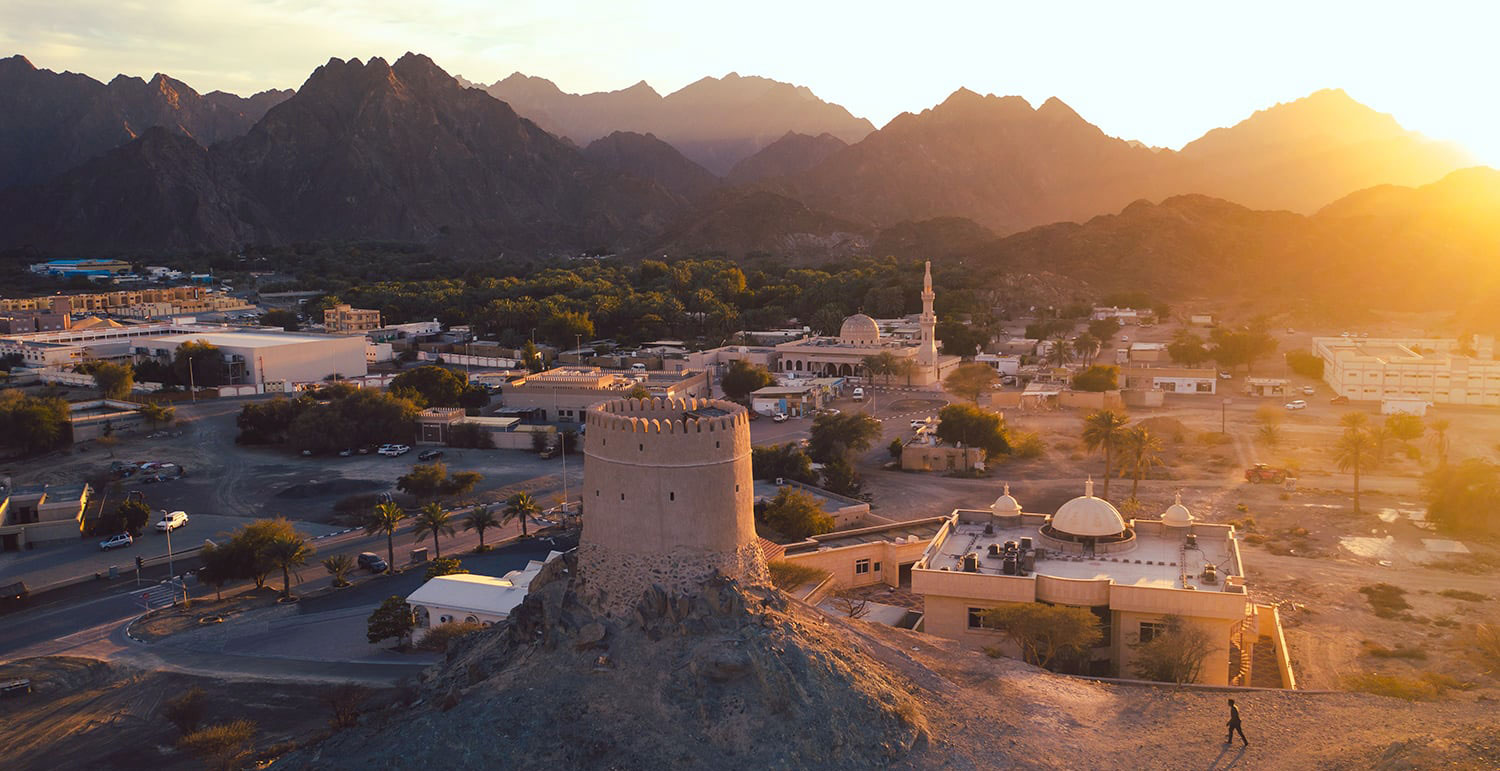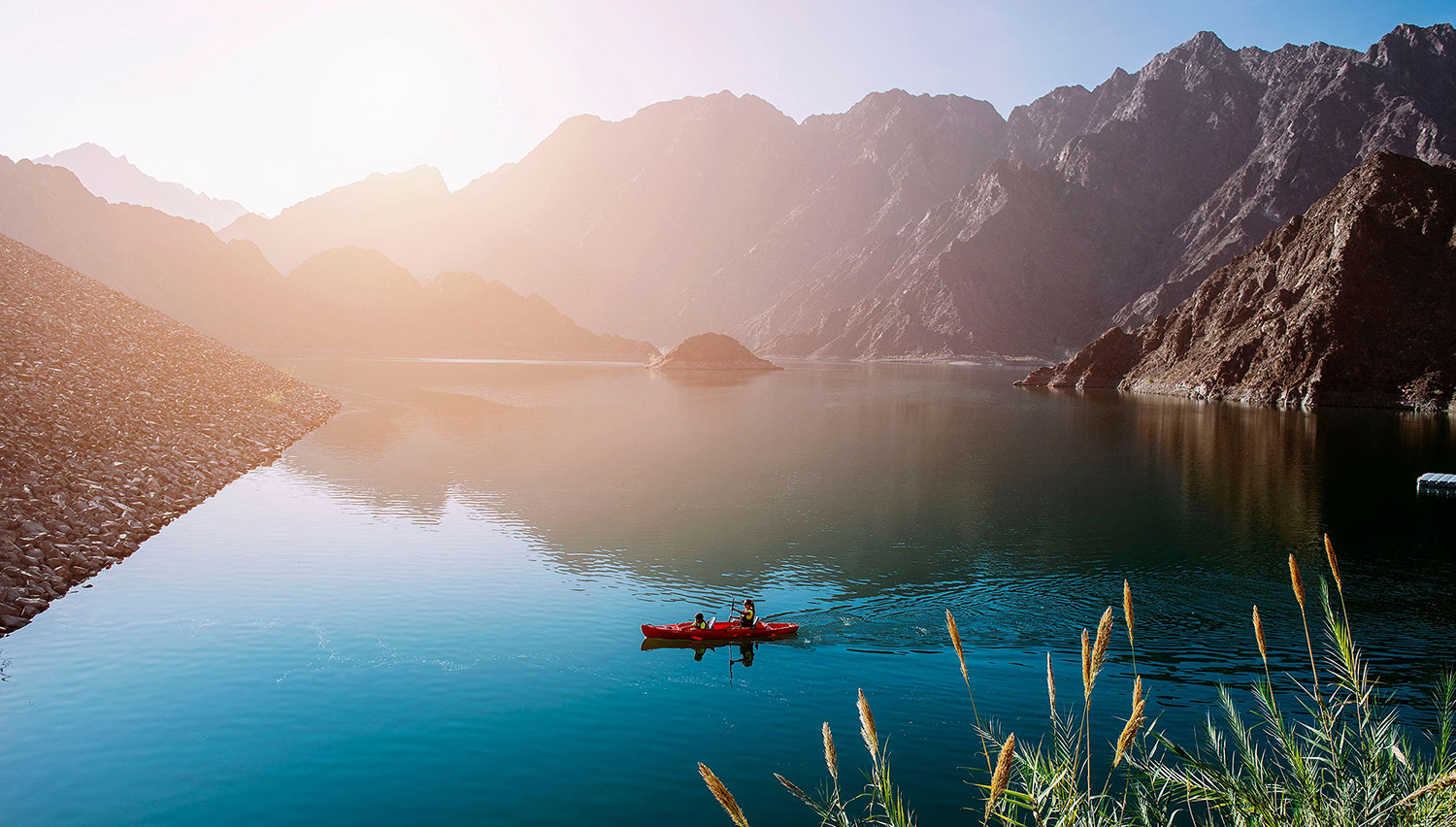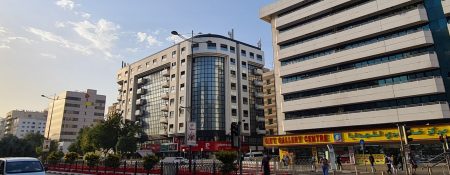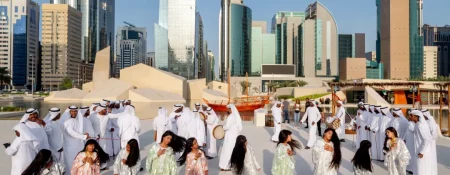Hatta, a small historical town located nearly 130km southeast from Dubai city, offers its visitors scenic views of beautiful Hajar Mountains, scattered springs and lush valleys. This area was once known as Al Hajerin, or Al Hajeran (“Two Rocks”) in reference to the two mountain peaks guarding its north and south borders. Its fertile land, combined with a favorable climate and ancient falaj irrigation systems, supported flourishing agricultural communities.
Discover the way of life of the early inhabitants, who relied on palm trees and date farming for their livelihood. These low cost, resilient desert trees sustained daily life: dates were harvested for food, or dried for trade. Palm leaves were used to create mats, fans, and carpets, while the trunks were essential in building tents and homes.
Agriculture remains a key part of Hatta’s economy, with more than 550 farms operating across the 140-square-kilometer region, making up 10% of the land. Heritage lives on in the village’s small farms, while new bird and animal conservation areas help safeguard the future. Visitors can even experience life as a beekeeper for a day at the Hatta Honey Bee Discovery Centre.

At the heart of Hatta lies the Heritage Village, a government-preserved and restored site that offers a glimpse into traditional rural life. Opened in 2001, the village brings Dubai’s rich heritage to life, featuring recreated huts and structures selling authentic goods, as well as life-size exhibits, documents, and sculptures.
Within the village is Bait Al Wali, one of the largest homes and the former residence of Hatta’s ruler. All visitors are invited to wander through its many rooms and courtyard, as well as relax in a shaded seating area. Outside, local artisans continue the craft of making jewellery, weapons, pottery, and utensils from clay, leather, and copper mined from the nearby mountains. Visitors can also explore local customs, including wedding ceremonies, folklore, games, and traditional songs, enjoying a perfect retreat from big cities.
Historically, Hatta’s residents depended on groundwater wells and springs due to scarce rainfall. However, the construction of dams now ensures a year-round water supply to the wadis, or valleys, which are revitalized by winter rains, bringing the landscape to life.
The iconic Hatta Dam, built in the late 1990s, took two years to fill and provided the community with a sustainable water source. Today, the Hatta Dam is a popular tourist attraction, with breathtaking views over turquoise waters contrasting against the rocky mountains. Visitors can drive along the dam for photos, hike across the terrain, or kayak across the peaceful lake to fully immerse in the scenery.
Surrounded by mountains, Hatta enjoys cooler temperatures than coastal areas. The Hajar mountains, with peaks reaching 800 to 1,600 meters, were formed beneath the sea millions of years ago. Their dramatic rock formations and deep crevices reflect centuries of geological evolution.

Visitors of Hatta can explore the Central Hatta Fort (constructed in 1896), one of the most significant architectural monuments in the UAE. The fort, restored in 1995, was used both as a residence and a defensive stronghold, featuring a large courtyard and an 11-meter watchtower. It was built using mountain stones and mud bricks, with palm fronds, trunks, and mud used for the ceiling.
Two round watchtowers, dating back to the 1880s, overlook the village. Standing 2.5 meters above ground, the towers were accessed by guards through ropes and small doors, offering a perfect vantage point for defense.
Just a short walk from the village is the Al Sharia palm farm, where visitors can enjoy a peaceful stroll beneath the trees and explore the ancient falaj irrigation system that runs several kilometers underground before surfacing.
Hatta Hill Park, built in 2004, offers another serene spot for picnics and barbecues, with a tower providing stunning views of the surrounding landscape.
For outdoor enthusiasts, Hatta is a haven for adventure, offering mountain biking, hiking, and camping. With only 2 hours drive from busy streets of Dubai, Hatta remains one of key destinations for those who want to get familiar with rich Emirati heritage, enjoy local nature, and relax from everyday life in big cities.




The UAE’s rich history is rooted in trade and tied to Islam. Its unique location between Europe and the Far East became the crucial factor in it's growth into the world's largest trading hubs. Throughout the ages, these lands had attracted merchants from India and China, and were prized by Europeans, in particular the Portuguese, the Dutch and the British.
After the discovery of oil and the formation of the Emirates, the wise rulers began the rapid development of the country's economy, shaping it into what it is today. Though small in size, the UAE quickly became an important player in regional and international affairs.
Although it's growth and development, UAE heritage have not been forgotten - on the contrary, is still well-respected among the nationals. History and culture of local people can be felt in the legendary hospitality of local hotels, architecture of modern skyscrapers and openness and kindness in living among the multinational community.
Here you can read various articles about UAE heritage, history and culture, and better understand, why this country's development became such a success throughout the years.